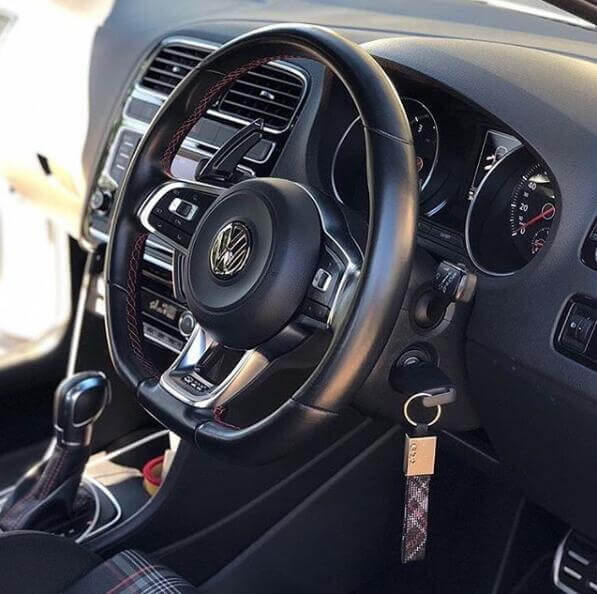DSG (Direct-Shift Gearbox) paddle shifters are manual controls found in vehicles with dual-clutch automatic transmissions, allowing drivers to switch gears without using a clutch pedal. Mounted behind the steering wheel, these shifters enable fast, seamless gear shifts by electronically controlling two gearboxes. DSG paddle shifters combine the benefits of both manual and automatic transmissions—providing quicker gear changes and greater driver engagement, especially in performance vehicles. They enhance driving control, allowing smoother downshifts and upshifts, perfect for those who want both convenience and control.

Paddle shifters significantly enhance a car's maneuverability by allowing drivers to switch between drive (D), sport (S), or manual modes without taking their hands off the steering wheel. The shifters let the driver upshift or downshift manually while maintaining full control. Typically, the right paddle is used to upshift (increase the gear), while the left paddle is for downshifting (decreasing the gear). This arrangement makes gear transitions quicker, smoother, and more intuitive during various driving scenarios, like accelerating or cornering.
When the vehicle is idling or driving, the gear is switched into manual (M) or sport (S) mode. In some models, manual control is possible even in drive (D) mode. Using the paddle shifters, the driver pulls inward to shift up or down. Once in manual mode, gear information is shown on the display. In some vehicles, both paddles allow upshifting and downshifting, providing more flexibility and control. This dual functionality offers greater convenience, especially when precise gear adjustments are needed in different driving situations.

The 2017 Mercedes-Benz AMG E43, which costs more than $10,000, has a maximum output power of 396hp and is equipped with a nine-speed automatic gearbox. The car shift plucking piece is powerful, can make the car reach the highest speed in an instant. By switching from D gear to manual mode, you can keep the engine running at a high speed before using the dial to switch to a higher gear. Accordingly, however, the driver must be very clear about how to use the shift plucks, and if they do not operate properly, they may damage the car.
Shifters were first used in racing cars, especially in many Formula cars. Because Formula racing cars are as lightweight as possible and pursue better aerodynamic performance, the cockpit of this kind of car is often very narrow, and the traditional shift lever can't fit in the cockpit at all. As a result, this novel shift is accompanied by a multi-function steering wheel and is widely used in the car, in addition to the throttle and brakes. Other operations on the car can be done on the steering wheel, simplifying the driver's operation and allowing them to focus more on the track. On the other hand, the racing technology itself has a tendency to reserve for the development of cars for the people. Soon, with the development of automatic gearbox technology, the function of plucking gear shift has also been used in ordinary mass production vehicles. At present, many medium and high-grade cars have been equipped with this part, with the corresponding function

For daily drivers, the role of gear shifts is to increase some driving fun and sense of fit, when the manual model gradually loses its market position. Gear shifts have become the only part that makes drivers feel "one man and one car". Although the automatic gear has developed rapidly in recent years, it is both fuel-efficient and fast, and the computer-controlled logical lifting gear has been able to meet the needs of daily driving. But at some specific times, the shift plucking seems to have become an essential existence. In the enthusiasm of the market, the development prospect is very bright.

